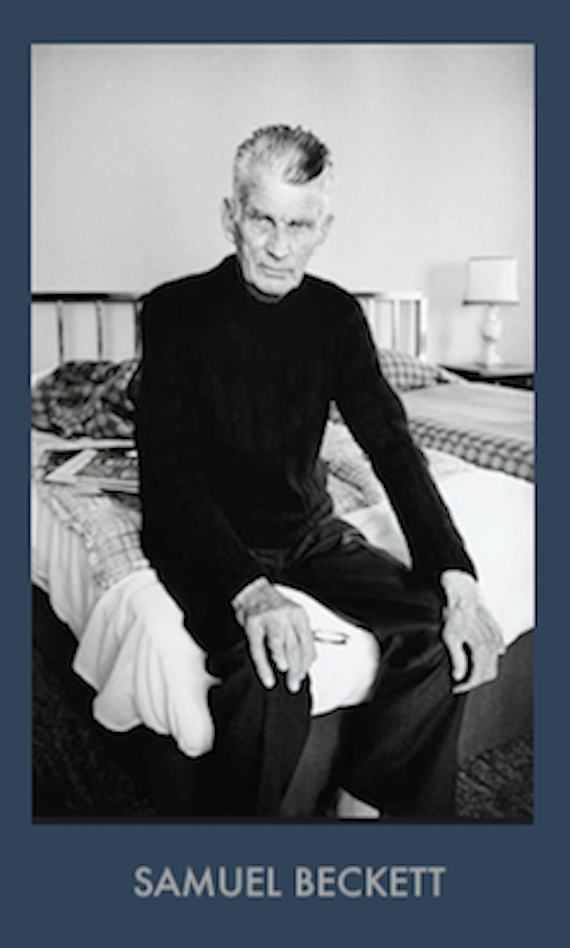Image of Beckett

Louis Le Brocquy
“Image of Beckett,” 1994
Oil on canvas, 46" x 35" (142 x 89 cm) from the O’Brien Collection.
Exhibited: “Louis le Brocquy: Dans le Cadre de l’Imaginaire Irlandais,” Espace Paul Ricard, Paris, 12-29 March 1996
Literary Reflection
By Marty Fahey, Curator, O'Brien Collection
Though quite skilled as such early in his career, Le Brocquy never thought of himself as a "portrait artist" in the sense that this designation had applied for centuries. Portraiture has often been concerned with creating a likeness of someone’s image that falls comfortably in a realm between accuracy and flattery and that also gives a glimpse of the person behind the image—an evocation that is inward-looking but anchored on the external visage.
The “Head Series,” which began in 1964 and grew and developed into a thematic preoccupation for him until 2007, was such a profound development in that genre, that it led the Irish writer John Montague to comment on Le Brocquy’s reinvention of the very concept and practice of portraiture. His approach turned the practice of portraiture around, so to speak, by attempting to construct the image from within, focusing instead on capturing the essence of the personality primarily and arriving at the emerging image of the person as a secondary consequence. Portraiture in the traditional sense was static, i.e, capturing only a moment in time; Le Brocquy’s hope, by comparison, was to capture the ongoing existential life force emanating from behind the facial features.
In this pursuit, Le Brocquy was guided in part by a belief in Celtic mythology that the head was the container of the soul—and that his role as an artist was to reveal that unique soulfulness of his subjects. Many of his subjects were well-known literary and creative personalities: W.B. Yeats, James Joyce, Seamus Heaney, Francis Bacon, and Bono, for example.
What makes this portrait so poignant and compelling is that it arose out of a long-standing friendship with Samuel Beckett and was informed by decades of discussions, visits, and collaborations together. One wonders if his closeness to Beckett made it more or less difficult to faithfully capture the nuances—the “Beckett-ness” of which he was so intimately aware.
There were several previous iterations of this portrait of Beckett: this one, however, adds in an image of the writer’s hands, deemed by Le Brocquy to be essential to an understanding of the uniqueness of his friend who used his large hands often as a way to express his ideas in lively conversations and, indeed, to express his unique genius in the written word.
Poetic Response

“What would I do without this world?”
By Samuel Beckett
what would I do without this world faceless incurious
where to be lasts but an instant where every instant
spills in the void the ignorance of having been
without this wave where in the end
body and shadow together are engulfed
what would I do without this silence where the murmurs die
the pantings the frenzies towards succour towards love
without this sky that soars
above its ballast dust
what would I do what I did yesterday and the day before
peering out of my deadlight looking for another
wandering like me eddying far from all the living
in a convulsive space
among the voices voiceless
that throng my hiddenness
Musical Response
Fellow Dubliner, John Field (1782-1837), "Nocturne in C Minor," played by Michael McHale and the RTE Orchestra